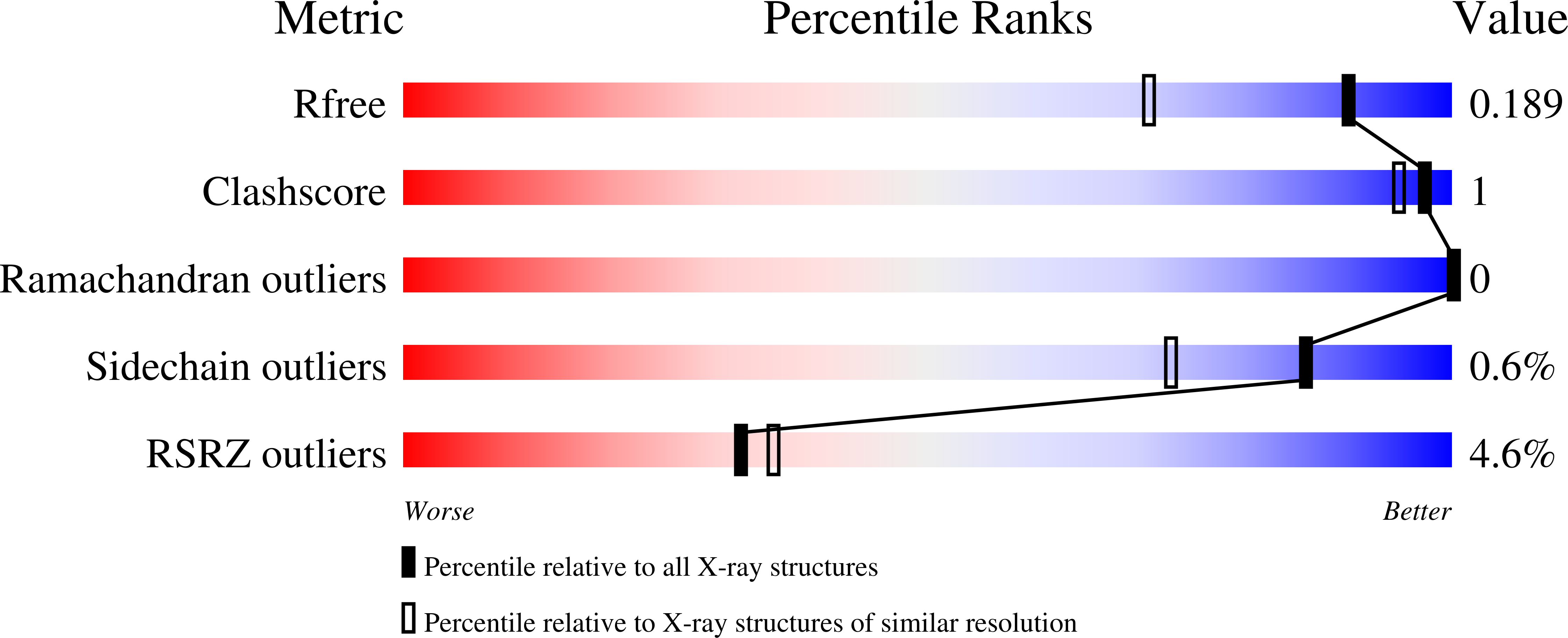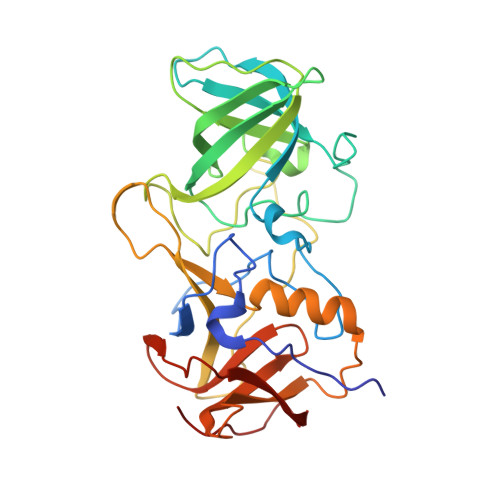Structural Constraints on Human Norovirus Binding to Histo-Blood Group Antigens.
Singh, B.K., Leuthold, M.M., Hansman, G.S.(2016) mSphere 1
- PubMed: 27303720
- DOI: https://doi.org/10.1128/mSphere.00049-16
- Primary Citation of Related Structures:
4ROX, 4RPB, 4RPD - PubMed Abstract:
Human norovirus interacts with the polymorphic human histo-blood group antigens (HBGAs), and this interaction is thought to be important for infection. The genogroup II genotype 4 (GII.4) noroviruses are the dominant cluster, evolve every other year, and are thought to modify their binding interactions with different HBGA types. Most human noroviruses bind HBGAs, while some strains were found to have minimal or no HBGA interactions. Here, we explain some possible structural constraints for several noroviruses that were found to bind poorly to HBGAs by using X-ray crystallography. We showed that one aspartic acid was flexible or positioned away from the fucose moiety of the HBGAs and this likely hindered binding, although other fucose-interacting residues were perfectly oriented. Interestingly, a neighboring loop also appeared to influence the loop hosting the aspartic acid. These new findings might explain why some human noroviruses bound HBGAs poorly, although further studies are required.
Organizational Affiliation:
Schaller Research Group at the University of Heidelberg and the DKFZ, Heidelberg, Germany; Department of Infectious Diseases, Virology, University of Heidelberg, Heidelberg, Germany.














